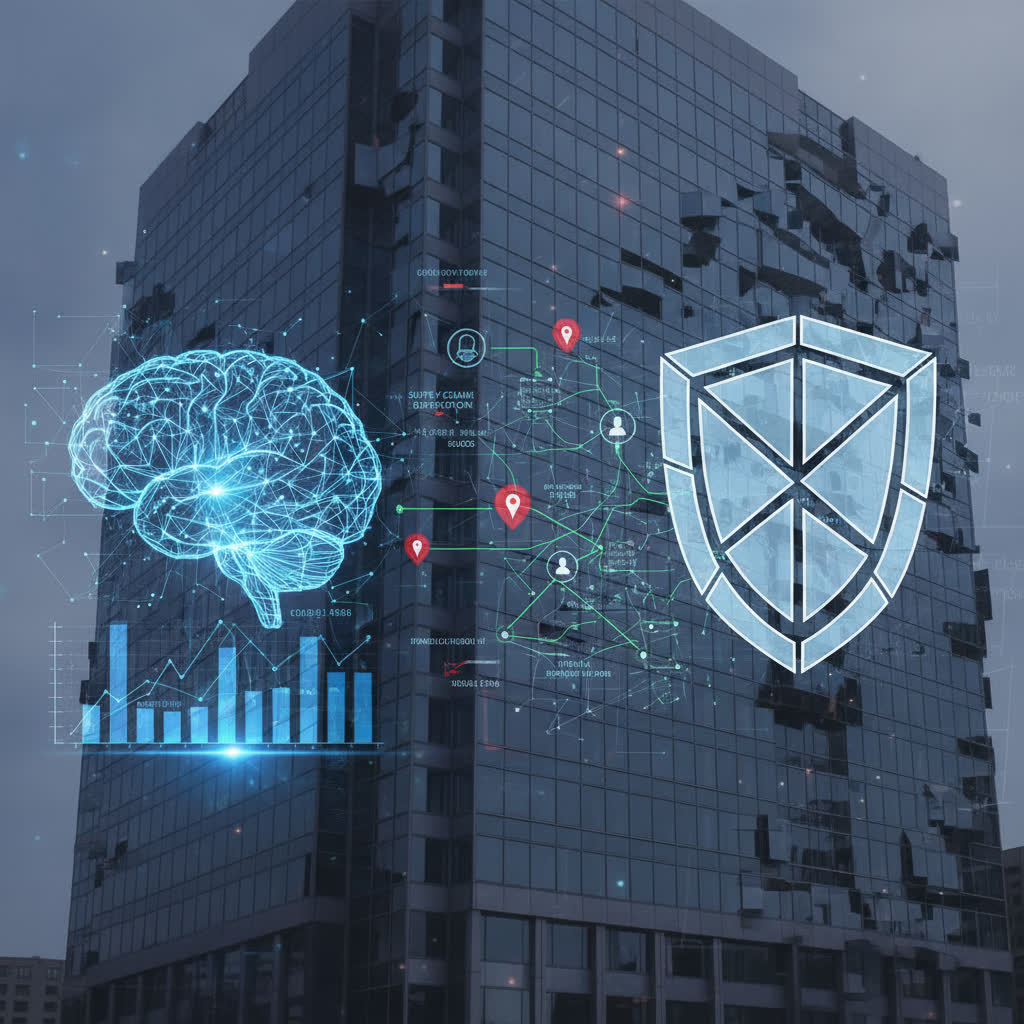Artificial intelligence and machine learning have emerged as influential technologies in the field of cybersecurity. Their advancement has brought a significant transformation to how organizations detect and manage various cyber threats. As digital environments grow more complex and interconnected, traditional methods of threat detection sometimes struggle to keep pace with the sheer volume and diversity of attacks. With more business processes moving online, the need to anticipate, identify and neutralize security threats becomes even more important. AI and machine learning stand at the forefront, shaping a more secure digital future in 2025 and beyond.
Understanding Threat Detection in Cybersecurity
The concept of threat detection has always been central to keeping digital assets safe. Threat detection refers to the identification of malicious activities or indicators that suggest a possible breach or attack. In the past, cybersecurity relied heavily on rule-based systems and human expertise to find anomalies within network traffic, data logs and user behaviors. Yet this model faces limitations. As cybercriminals grow more sophisticated, threat signatures evolve rapidly making static detection techniques less effective over time. Modern digital ecosystems, including large enterprise resource planning (ERP) platforms, witness thousands of interactions and transactions every second. Security teams often find themselves overwhelmed by the sheer scale and variation of activity.
Traditional detection tools may lag behind new variants of malware, phishing attempts or insider threats. This creates the need for more advanced solutions that can learn, adapt and predict emerging attack patterns. AI and machine learning enter the picture as adaptable frameworks capable of analyzing vast datasets, learning from historical threat instances and making sense of intricate attack vectors. By leveraging these technologies, organizations acquire the ability to spot even subtle indicators of risk across their digital landscapes.
The Role of Artificial Intelligence in Modern Security
Artificial intelligence refers to the development of computer systems that can perform tasks typically requiring human intelligence. These tasks include reasoning, learning, problem-solving and understanding language. In cybersecurity, AI acts as a force multiplier for security teams. It can work around the clock, process huge amounts of data and identify patterns that might otherwise evade detection.
AI models excel at classifying known threat indicators, making connections between disparate data sources and predicting potential incidents with high accuracy. Unlike rule-based systems, AI solutions benefit from constant learning. They ingest information from numerous sources, refining their understanding of both historical attacks and new anomalies in real time.
The power of AI is especially evident in its ability to analyze patterns among large data sets, forming a baseline for normal activity within a network or application. When deviations occur, even if subtle, the system can flag these occurrences for further scrutiny. This proactive approach helps organizations neutralize threats before they escalate into larger breaches or disrupt business operations.
The Mechanics of Machine Learning for Threat Identification
Machine learning, a branch of artificial intelligence, focuses on algorithms that improve over time as they are exposed to more data. Through a process similar to how humans learn from experience, machine learning models adapt to changes and discern the difference between legitimate and suspicious activity. At the heart of these systems lies a range of techniques, each suited for particular tasks within cybersecurity.
Supervised learning, for instance, uses labeled datasets to train a model. When it receives examples of known threats versus benign activity, it becomes adept at classifying new observations into safe or risky categories. Unsupervised learning, meanwhile, excels in environments where labels are hard to obtain. It can cluster data by finding natural groupings, highlighting outliers or anomalies for closer inspection. Reinforcement learning lets a model experiment with different actions and learn which strategies result in the highest rewards—that is, the best detection outcomes.
Through continual feedback, these models refine their decision-making abilities. They reduce the noise generated by false positives and surface genuine risks with greater precision. As new data flows through the systems, the learning does not cease. This quality allows machine learning models to stay abreast of rapidly shifting threat landscapes and provide security teams with timely, actionable insights.
Real-World Threats Facing Organizations Today
Cyber threats have evolved in complexity and number over the past decade. Attackers employ various tactics, from phishing and ransomware to privilege escalation and insider sabotage. Third-party risk and supply chain attacks introduce even more challenges, as organizations depend on external vendors for critical services. Increasing cloud adoption, remote work and mobile device proliferation each adds another layer to the attack surface.
Social engineering attacks exploit human psychology rather than relying solely on technical vulnerabilities. Business email compromise, for example, tricks employees into transferring funds or revealing confidential information. Malware evolves constantly—variants avoid signature detection and use file-less attacks that execute in memory, leaving few traces.
Insider threats, whether intentional or accidental, represent a unique risk. A well-placed employee or compromised user account can bypass many security measures undetected. These issues make traditional security approaches less reliable. AI and machine learning offer the agility and insight needed to track constantly shifting attacker strategies and adapt defense mechanisms accordingly.
How AI and Machine Learning Transform Threat Detection
As organizations generate more data, monitoring for threats becomes a monumental task. AI and machine learning strengthen threat detection by automating the analysis of security events across the enterprise. They excel at identifying rare or previously unknown attack types—referred to as zero-day threats—because they analyze patterns rather than depend solely on known signatures.
Machine learning models can correlate data across multiple sources, such as user activity logs, network traffic, application events and system health status. By building dynamic baselines for normal behavior, these systems flag deviations that might signal an ongoing attack. For example, a user accessing large amounts of sensitive data outside usual work hours or a process rapidly encrypting files could prompt an immediate investigation.
Another transformation involves the reduction of alert fatigue. Security analysts often suffer from an overwhelming number of alerts, many of which turn out to be non-threatening. AI-powered solutions can filter noise, prioritize incidents and escalate only those requiring human intervention. This approach improves response times and helps organizations allocate resources efficiently.
Data Acquisition and Preparation for Effective Threat Detection
Data acts as the lifeblood of any artificial intelligence or machine learning system. To make accurate decisions, AI frameworks must process high-quality, relevant data that spans all aspects of an organization’s digital footprint. This encompasses log files from servers, endpoints and network devices as well as records from cloud services and third-party software.
Effective threat detection begins with thorough data collection. Sensors and agents gather telemetry on events such as file changes, login attempts, data transfers and process launches. To ensure success, the data must undergo cleaning and normalization. This step addresses gaps, removes redundancies and transforms raw input into a format the models can utilize efficiently.
Enrichment further augments the dataset. Security teams might add contextual information like geolocation, device metadata or user role. With robust data pipelines, AI and machine learning can maintain a comprehensive view of normal operations and rapidly surface discrepancies that warrant further review.
Continuous Learning and Adaptive Security
Modern digital threats often morph in response to detection attempts. Attackers adjust tactics, techniques and procedures to evade security controls. In this dynamic environment, static rules struggle to detect novel threats. AI and machine learning bring an adaptive edge through continuous learning loops.
Once deployed, a machine learning system monitors feedback from security teams, users or automated alert resolution processes. Each new instance—a false positive, successful detection or missed incident—becomes training data for model refinement. Feedback does not only flow in one direction. Automated retraining cycles allow AI to improve performance with little manual intervention.
Continuous learning means that threat detection grows stronger over time. Security systems not only spot known attack vectors but also react quickly to unfamiliar patterns. Organizations gain peace of mind that their cyber defenses will not become obsolete as threats continue to develop and multiply.
Common Use Cases for AI-Enhanced Threat Detection
Certain areas within cybersecurity benefit significantly from AI and machine learning intervention. One notable example is phishing detection. Machine learning algorithms analyze the text and structure of emails, identify malicious intent and flag suspicious messages for users. They also examine sender reputation and URL patterns for hidden threats.
Anomaly detection in network traffic represents another powerful use case. AI models monitor baseline activity on networks and flag unusual spikes in traffic, data exfiltration attempts or behaviors that match attack profiles. Endpoint protection uses AI to detect malware or exploit attempts in real time, often before signature-based scanners can identify them.
Identity and access management leverages machine learning to spot unusual login times, access requests from remote locations or privilege escalations. By evaluating deviations from previously established patterns, the system raises security alerts for rapid follow-up. Fraud detection, both in financial services and e-commerce, applies AI models to transaction logs, seeking signs of abuse or account takeovers.
Benefits of Using AI and Machine Learning for Security Operations
Security operations teams experience measurable improvements when supported by AI-driven tools. First, automation saves time by handling repetitive analysis tasks. This gives security analysts more opportunity to concentrate on incidents that require complex investigation and human judgment.
AI systems reduce the number of false alarms, helping analysts avoid burnout and focus on genuine issues. Predictive analytics allow organizations to proactively address risks, shutting down attack paths before significant harm occurs. With the help of machine learning, security operations centers (SOCs) can manage larger digital estates without scaling up headcount dramatically.
The speed of detection increases because AI-driven platforms operate in real time. Threats detected within seconds enable firms to respond before attackers can accomplish their objectives. Through adaptive learning, machine learning frameworks keep defenses sharp and effective regardless of how quickly attack tactics shift.
Industry Standards and Regulatory Considerations
Compliance with data protection rules and industry standards remains an ongoing priority for organizations of all sizes. Frameworks such as GDPR, SOX and ISO 27001 place stringent expectations on companies to maintain the confidentiality, integrity and availability of sensitive information. AI and machine learning, while powerful, must operate within these regulatory bounds.
Privacy by design governs the practice of embedding strong privacy measures at every level of system architecture. Machine learning models that process personal or sensitive data must offer transparent logic and auditable results. Ethics and fairness must guide algorithm development to prevent biases or unintentional discrimination.
Periodic model audits, data anonymization and careful feature engineering ensure that compliance stays intact. Documentation of decision-making processes builds trust among stakeholders, regulators and auditors. In regulated sectors such as finance, government or healthcare, these steps remain non-negotiable parts of any AI-powered cybersecurity strategy.
Challenges in AI-Based Threat Detection
Despite their potential, AI and machine learning systems present their own set of obstacles in cybersecurity. Adversarial attacks, for instance, involve deliberately crafted data designed to confuse or mislead machine learning models. Attackers might introduce subtle manipulations into data that evade detection without raising alarms.
Another concern revolves around data quality. Poor-quality input reduces the effectiveness of even the most sophisticated algorithms. Insufficient labeling or mislabeled datasets can mislead models, producing incorrect categorization of threats. Maintaining up-to-date, diverse and relevant data remains a constant challenge for security teams.
Transparency and explainability also matter. Some AI models function as “black boxes,” making decisions without clear logic that humans can easily follow. This becomes problematic during audits or incident investigations. Building interpretability into AI systems is an open area of research and ongoing development within the technology community.
The Future of Threat Detection with AI and Machine Learning
The landscape of cybersecurity continues to transform as digital transformation accelerates worldwide. AI and machine learning will likely assume an even more central role in threat detection strategies. As more organizations embrace hybrid cloud, remote work and Internet of Things (IOT) devices, security ecosystems need to be both intelligent and adaptive.
Looking ahead, advancements in explainable AI, federated learning and privacy-enhancing technologies will enhance both security and compliance. Edge computing may push decision-making closer to the source of data, reducing latency and improving the speed of threat response. Automated incident response platforms powered by AI promise to further shorten detection-to-remediation timelines.
Continual collaboration across the academic, public and private sectors will drive innovation, research and best practices in AI-powered cybersecurity. As threats grow in scale and complexity, human expertise will remain vital—working hand-in-hand with the ever-evolving capabilities of artificial intelligence and machine learning.





